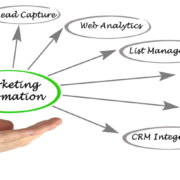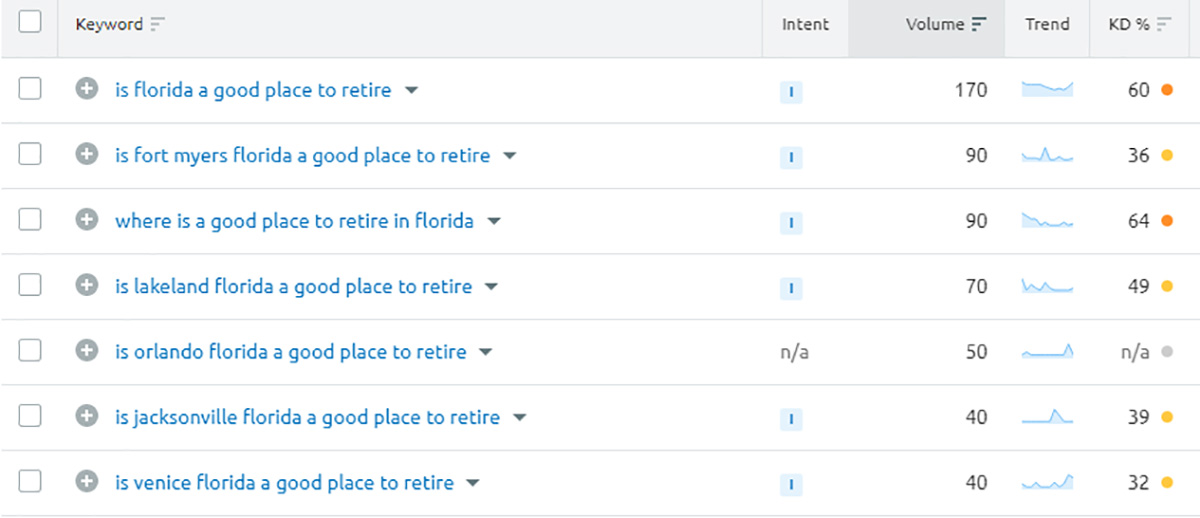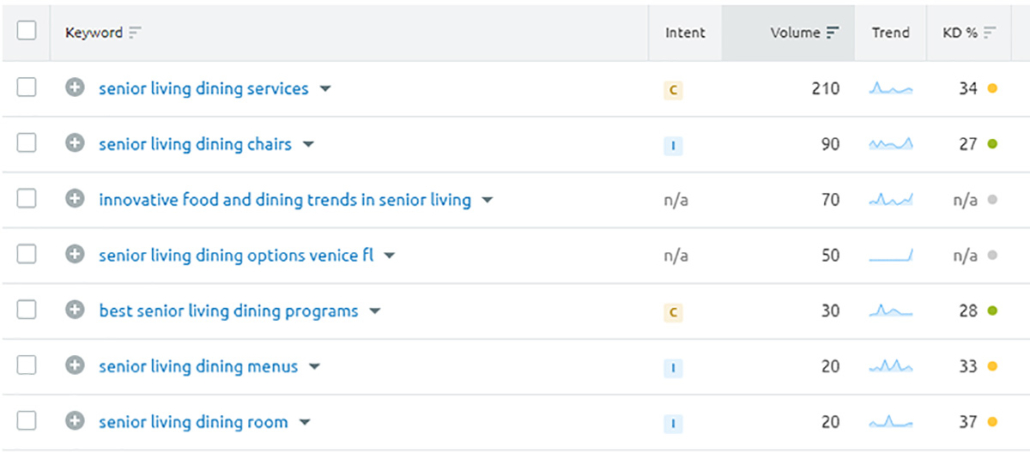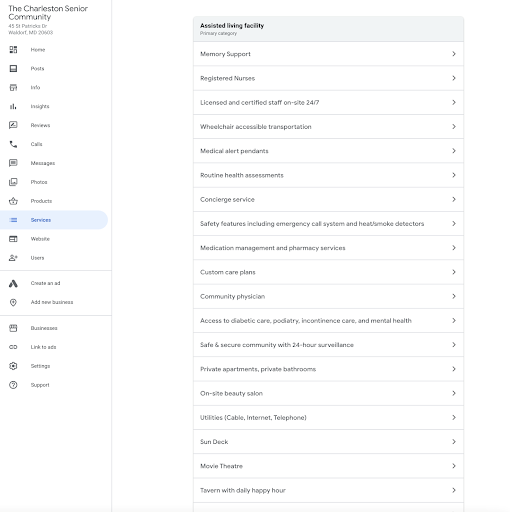Senior Living Sales Strategies for High-Intent SQLs
Working with high-intent sales-qualified leads (SQLs) who are close to making a decision can be quite thrilling for a senior living sales director.
No wonder, too. This is the sales director’s job and their source of income. And with the finish line in sight for everyone, it’s natural to get excited. After all, what’s left to do?
Turns out quite a lot. Because at the end of the day, high-intent SQLs are still human, and humans are notoriously unpredictable. Which is why the way sales directors interact with high-intent SQLs will and should be different from the way they interact with other senior living leads.
Head spinning yet? Don’t worry. We’ve got you. Below, we discuss several senior living sales strategies for high-intent SQLs.
1. Senior living sales strategies: Stop selling
OK, we know what you’re thinking: Say what? But here’s the thing: You no longer need to sell to your high-intent SQLs, at least not in the traditional sense. They’re about as “in” as they’re going to get since your community is on their shortlist.
Instead of selling to them, you need to find out if anything’s giving them pause. To do that, ask a version of the following question: “In your mind, what are some of the community’s drawbacks? I can’t promise that I’ll be able to fix or change any of them, but maybe there’s something I forgot to mention that might help alleviate any concerns.”
We can almost guarantee there will be at least one drawback that you can address and genuinely turn into a positive, which might help tip the scale in your community’s favor.
Bottom line: With high-intent SQLs, you don’t need to sell to them anymore . . . you simply need to enable them to buy from you.
2. Senior living sales strategies: If things have stalled, find out if there’s an external factor going on in the SQL’s life.
Sometimes you’re working with a prospect and you’re convinced they’re going to sign papers when—BAM! Everything comes to a screeching halt.
In this scenario, an external factor is often at work.
Some common ones include:
-
- Finalizing financial details (for example, the Veterans Aid & Attendance Benefit)
- Dealing with an unexpected medical issue
- Stalled by an unrelated family matter (death, wedding, family trip)
- Selling/downsizing a home
Our point: You need to know what your high-intent SQL is facing in their lives and adjust your conversations and follow-up accordingly.
For example, if your prospect is suddenly in the hospital due to a broken hip, send the person flowers. Don’t do so as a selling tactic, but as a caring tactic. Once they’re back home, stop by for a visit to see how they’re doing. (Call first!) Again, not to push the sales narrative, but to simply demonstrate your humanity.
Once they’re truly back on their feet, then you can ask if recent events have changed their decision or timeline. Some will be ready to move forward. But sometimes external factors might force a downgrade from high-intent SQL to regular SQL or even back to marketing-qualified lead (MQL). This happens. Knowing where your prospect is in their journey, even if there’s been a setback, is important since it will inform how you engage with them going forward.
3. Senior living sales strategies: Think beyond lunch.
More than likely, your high-intent prospect has already vetted the food situation in your community. As food services company Unidine notes in this article, “It is widely acknowledged that food and dining are key aspects of residents’ satisfaction and influence the decision-making of prospective residents.”
If they’ve already done lunch in your community, it’s time to think BEYOND lunch. Hopefully, you took good notes when you chatted with the prospect. (If not, get in the habit of finding out their likes and dislikes when it comes to food—breakfast, lunch, dinner, desserts, drinks.)
Get creative—here are some ideas:
-
- For a prospect with a sweet tooth, have your chef prepare a box of yummy treats that you deliver to the prospect with a note: Sweet times await you in our community. Here’s a sample of what you can expect.
- Invite the prospect and a few members of their family to a special home-cooked meal in your community’s function/event room. The goal is to show how the room can be used precisely for these family gatherings—and to demonstrate how fabulous the food is.
- Invite the prospect to a special event that includes refreshments, like wine and appetizers. Maybe it’s an author reading or a musical guest.
The goal is to highlight various types of foods—appetizers, family meals, desserts—along with different activities that involve food and camaraderie. The more you can make your community truly feel like home, the more it will help the prospect “see” themselves living there.
4. Senior living sales strategies: Find out who the competition is.
This strategy is a delicate dance. The goal isn’t to bash another community, and doing so is bad form in our tight-knit industry. But if your prospect is vacillating between your community and a competitor’s community, you need to have a plan for how to approach the conversation.
Our recommendation? Arm yourself with a small asset library on each competitor. We’re talking about a folder that you keep on your PC for each main competitor that your community typically finds itself up against.
In each competitor’s folder, you’ll want to have the following:
A comparison chart. Think of a simple, nicely designed “dot chart” that compares your community to the competitor’s community. Honesty is essential. Your community isn’t perfect for everyone. The fact your community has a yoga studio might not matter to your prospect while the fact the competitor’s community has a dog park does matter.
The goal is to simply have a comprehensive, objective-as-possible chart that prospects can glance at. Sometimes seeing everything laid out side-by-side can be just what someone needs to make a decision.
-
- Tips for how to share the chart: Be direct. “I know you’re considering our community and ABC Senior Living. I thought you might find this chart helpful.”
A list of current residents who also considered the competitor’s community. In a perfect world, you’d have a collection of short videos from these residents where they talk about why they chose your community instead of the competitor. These videos don’t have to be professionally shot, either, since you’ll only use them for this purpose. (An iPhone video is fine.)
Note: If the current resident is willing to talk to prospects, you can also offer that option. But simply sharing two or three videos of real residents talking about why they decided to move into your community might be all the prospect needs to hear.
-
- Tips for how to share the video: Send an email (or if you’re with the prospect in person, you can pull up the video on your phone or tablet) and say something like, “Gloria, one of our residents, also seriously considered ABC Senior Living as well. I thought you’d find it interesting and potentially helpful to hear why she finally decided on us.”
Earned media that features your community. You might not have info like this for every competitor and that’s OK. But you should absolutely collect any positive media coverage about your community—especially if it also mentions the competitor—and share that with your prospect.
For example, if the town/city your community is in has a “Best of” list and your community comes in first for senior living (but your competitor comes in second or third—or doesn’t place at all), this can be something to share.
-
- Tips for how to share this info: This sort of info could be good reading to send along with something else. Like, if you send a box of tasty desserts to your prospect, you could include a couple of articles that talk up your community. (And, of course, this sort of info is stuff you’d want to share on the website, social media, and in lead nurturing emails for marketing-qualified leads.)
5. Senior living sales strategies: Appeal to all influencers.
It’s rare to have only one person involved in the decision-making process. Senior living sales directors should get in the habit of asking who’s involved in the discussions. And frame it exactly like that: Tell me more about the discussions you’ve been having about this decision. Who’s involved? Would it be OK if I get their email addresses?
For example, if an adult daughter and her mother are looking for a local community, but you’ve gotten wind about an adult brother who lives in Florida who’s been participating in the discussions . . . it makes sense to get his email address. You could send him a quick, personal email: “I just had a great visit with your mom and sister and want to introduce myself . . .”
From there, if your prospect evolves into a high-intent SQL, you’ll have easy access to the contact information for all the people who are influencing the decision. So, using the above example, you could suggest a Zoom call with mom, daughter, and son to discuss where things stand, next steps, and so forth.
Bonus: Free eBook!
You likely noticed a theme in our suggested senior living sales strategies above—care more, sell less. One of our fabulous colleagues, Mike Miller for Primo Solutions, has a fabulous ebook called Stop Selling and Start Caring. He wrote it specifically for sales and marketing folks in the senior living industry. You can download it for free here.















 When we say “off-page,” we’re referring to the stuff behind the scenes (people searching won’t see this info). A good example is the category you choose.
When we say “off-page,” we’re referring to the stuff behind the scenes (people searching won’t see this info). A good example is the category you choose. 